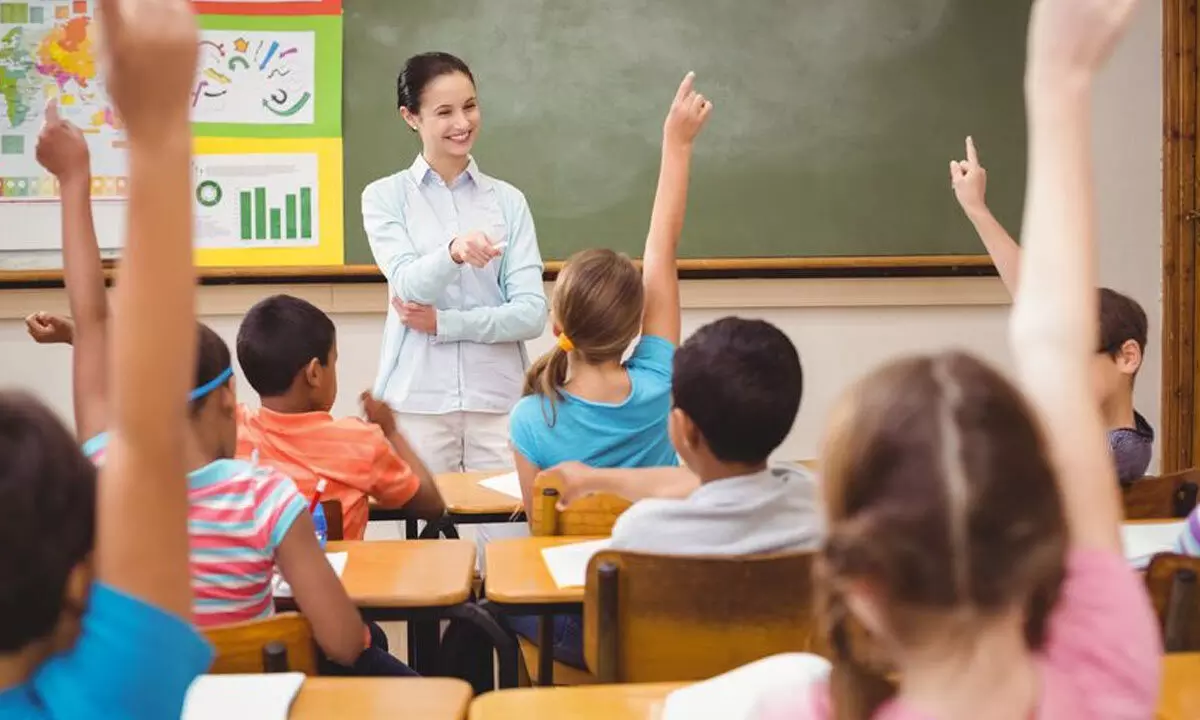Tips to foster an inclusive classroom

Rapid transformation in education has led to educators focusing on promoting inclusivity inside classrooms
New Delhi: Rapid transformation in education has led to educators focusing on promoting inclusivity inside classrooms. The objective of this initiative is to address challenges like fostering student success, and emotional and social welfare, as well as garnering a vibrant classroom atmosphere. This school of thought has had a favorable outcome, assisting the transformation of classrooms to make students feel more welcomed, encouraged, and appreciated irrespective of their diversity to foster an immersive learning experience.
Recent studies also support this notion, as researchers and cognitive scientists have revealed that inclusivity promotes academic excellence in comparison with conventional classrooms. Additionally, the advent of digital classrooms means inclusivity has become a more critical teaching component than ever before. Educationists believe it can lead to a more streamlined approach to enhance students’ comprehension of reading and mathematics, along with social abilities. However, while inclusive classrooms are certainly becoming a trend, only a handful of teachers understand its true extent. On this, Rishabh Khanna, Founder and CEO, Suraasa, shares practical tips for teachers and how to create creative inclusive classrooms.
Inclusivity in education
For the uninitiated, inclusion in education is a critical component that ensures equal accessibility to learning opportunities for every student. In simpler terms, an inclusive classroom is where all students are supported by an efficient learning atmosphere that caters to their scholastic requirements irrespective of language, learning pace, demographics and other aspects. This initiative is designed to overcome learning barriers for individual students, not by providing additional support but by democratising education and raising accessibility. This pedagogy emphasises treating every learner equally and raises academic performances through an effective learning atmosphere that utilises teamwork, comprehension skills, and strategic scholastic plans.
An inclusive digital classroom offers numerous benefits to students and teachers alike. Prominent studies have found that a staggering 65% of learners inside inclusive classrooms display measurable increases in scholastic performance in comparison to their peers in conventional classrooms. This not only confirms the effectiveness of inclusivity on students, but helps teachers with an additional tool to streamline imparting knowledge and grow professionally. This also eliminates discrimination and prejudices, allowing students to garner a sense of belonging and social skills. This leads to teachers motivating learners, extending valuable support and garnering respect.
Strategic tips to foster an inclusive classroom
Facilitating and maintaining an inclusive digital classroom is crucial not only because it helps learners to overcome their barriers, but also enhances their general potential through a highly effective atmosphere. It eliminates any negativity and disrupting factors in academic journeys, safeguarding the next generation from developing prejudices and misconceptions. Here are a few tips for educators to establish efficient and inclusive digital classrooms to ensure an immersive learning experience for students.
Formulating classroom norms
Engaging with learners is always a difficult task for teachers, predominantly because of the generational gaps. This gap can lead to students adopting negative social norms. This is why establishing classroom norms becomes highly important for educators. This helps teachers to foster inclusivity for every student by promoting equality, and learners to differentiate between appropriate and inappropriate behaviour leading to a supportive environment for different individuals. Educators can ask learners to create a list of rules and regulations, promoting teamwork, and apprehension of the guidelines in an engaging way. This can result in students feeling a sense of belonging, safety and respect inside digital classrooms.
Actively listening and supporting learners
A digital classroom hosts learners from diverse backgrounds, ethnicities, and communities having more social differences than similarities. This directly translates to learners having specific aspirations and comprehension. Educators must extend their support to students through active listening and offering invaluable insights that can help the students not only achieve their dreams but also understand their classmates. This helps to garner a sense of respect and understanding among students, promoting inclusivity. This is a crucial component of modern pedagogy, and engaging students at a macro level assists their overall academic performance and leads to success.
Treating learners equally
All students are different, but educators must treat them equally inside classrooms to achieve inclusivity. Teachers need to adopt a proactive stance to ensure all students are subject to the same level of learning through the same set of information. This helps to create a highly inclusive academic environment and fosters high comprehension skills among learners. Teachers need to ensure that lessons and other educational activities cater to students equally to garner equal attention. For example, learning about a particular story which is highly relevant to the majority of the students, whilst not understandable for others hailing from a different geography, defeats the general purpose. Instead, teachers can identify which stories provide similar learning and are relevant to all students, and focus on imparting knowledge through those.
Not just lessons and activities, teachers must ensure rules and regulations are maintained by all students and non-compliance results in equal treatment for all. This promotes equality in the classroom and fosters a sense of belonging, thus enhancing the quality of education. As global education evolves at an unprecedented rate, educators must identify the increasing importance of creating inclusive classrooms.
This is not only to promote equality among learners but to establish classrooms as a welcoming and supportive place, where students and their feedback are valued, along with garnering a sense of belonging. An inclusive classroom also translates into a greater learning curve that shapes the lives of generations of students, helping them with positive and constructive social skills barring prejudices and misconceptions. It also enables teachers to meaningfully engage with students, and drive professional growth to achieve excellence.


















